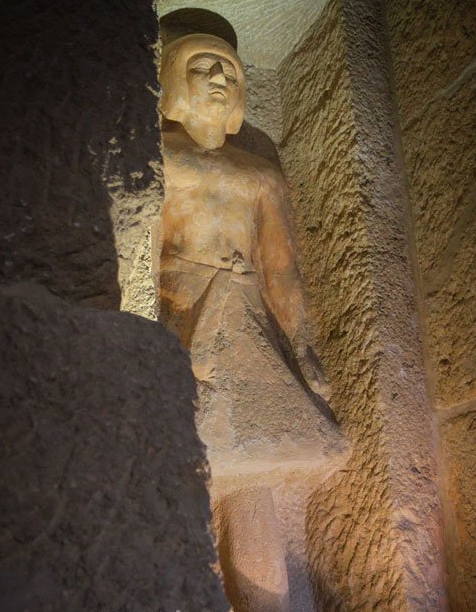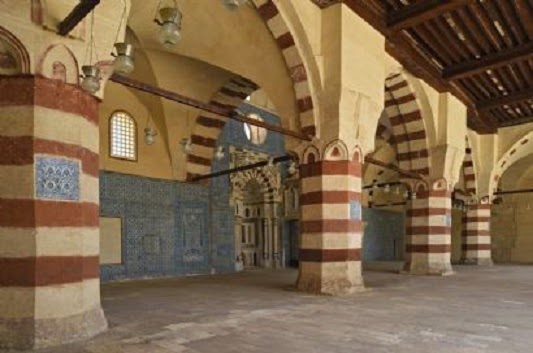
in Triplicane [Credit: P. Jawahar/Indian Express]
The renovation work that began on January 26 has been going on in full swing, with the preliminary poojas for performing Kumbhabhisekham (consecration) expected to begin within a couple of weeks, according to the Agama Sastras.
The work is under the close monitoring of HR and CE Minister R Kamaraj, while R Kannan, Culture, Museums, Tourism and Religious Endowments Departments Secretary, experts from Archaeological Survey of India, State Archaeological Department and Museum department are extending advice. All renovation works have been documented from the beginning.
The renovation work is estimated to cost ` five crore, funded by donors. According to sources, the work is done in such a way that it would not require any structural repair for a century.
Talking to City Express, P Kothandaraman, Deputy Commissioner, Parthasarathy temple, said all the 29 holy kalasams had been gold-coated for the first time. This was done in the conventional way instead of modern electroplating process, and used 364 grams of gold for this.
“The electrical network has been replaced. The bulbs have been replaced with important LED bulbs. In accordance with our ancient practice, no electric light would be installed inside Karpa Griha (sanctum sanctorum). Once the consecration of temple is complete, the devotees can have darshan only in the light of ghee lamps,” Kothandaraman said.
Along with the structures, the lily pond (Allikeni), which gave the village its name Tiru Allikeni, has been restored. According to the temple history, the pond is called kairavini pushkarani — filled with red Lily flowers. It is believed that Goddess Mahalakshmi was born in this tank as Vedavalli. For the past four or five decades, there have been no lillies in the pond. But soon, red colour lily flowers will fill the pond to suit its name.

in Chennai [Credit: The Hindu]
Kothandaraman added that unnecessary structures built inside the temple over a period using cement and all the marble structures have been removed. In their place, unpolished granite (karunkal) levelled by hand push hammering would be laid in all parts of the temple, adding to its ancient eighth century look.
As the woodwork inside the gold- plated Ananda vimanam atop the sanctum sanctorum of the presiding deity Lord Parthasarathy has been damaged over the years, it has been renovated using new teak wood. Instead of steel nails as is usual, brass nails have been used for the work.
The two temple cars will be covered with unbreakable transparent glasses in their middle portion at a cost of `27 lakh.
The karungal on the compound walls have been applied with an organic mixture called noogra paste imported from Afghanistan and another clay imported from Africa to ensure their safety.
Another mixture called surya kavasam, a mixture of aloe vera, vasambu (sweet flag), kadukkai (terminalia chebula) and a few other herbs will be applied inside of all temple towers in order to protect them from termites and other decay.
The 16-pillar mandapam (Andaal Neeraatta Mandapam) located on the Eastern side of the temple has also been renovated. The lime coatings given during the past 10 decades have been removed using an organic material called devata.
Dream Darshan
The presiding deity here is Sri Venkatakrishna Swami also known as Geethacharya. Puranas say King Sumathy prayed Lord Thiruvengada of the Seven Hills to give him darshan in the form of the charioteer (Sarathy) to Partha (Arjuna) during the Mahabharata war, rendering Bhagavad Gita. Lord Thiruvengada appeared in his dream and bade him to go to Brindaranya (Triplicane) where he would give him darshan in the form he wished. Sri Venkatakrishna Swamy is enshrined in the middle of the sanctum sanctorum, while Sri Rukmani Thayar and Satyaki are on his right and left. Elder brother Balarama is seen on the right side of Rukmani Thayar facing North and his son Prathyumnan and grandson Anirudhan are on the Northern side facing south The Utsava Moorthi is seen with marks in the face caused by Bheeshma’s arrows during the Mahabharatha War.
Author: T. Muruganandham | Source: Indian Express [May 21, 2015]
























